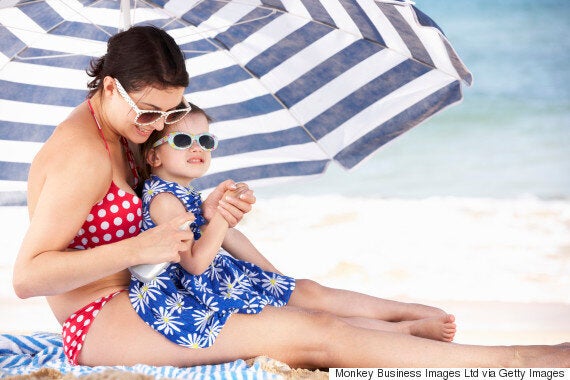Sun-seekers have been told that there is "no safe or healthy way to tan" by the National Institute for Health and Care Excellence (NICE).
The new guidance advises people to always wear sun protection with a factor of at least SPF15 when out in the sun and notes that people should apply roughly six to eight teaspoons of lotion to cover the body.
Additionally, using SPF30 sunscreen or higher does not necessarily mean people can spend more time in the sun without the risk of burning.
The advice comes just one day after Hugh Jackman issued a sunscreen warning to his fans after having treatment to remove yet another skin cancer growth from his nose.

The guidelines from NICE suggest that getting a tan provides little protection against later exposure to sunlight and the resulting skin damage outweighs any later protective effect.
They add that even in cool and cloudy weather, it is still possible to burn at midday in the summer. It is also possible to burn at other times of the day and year.
The guidelines suggest that sun cream is an effective way to further protect yourself from UV rays, but it should not be an alternative to covering up with suitable clothing or seeking shade.
It can also be useful when other methods of protection are not available, but only if used liberally, carefully and repeatedly on all exposed skin, they add.
Those who wear sunscreen and then go swimming (or sweat profusely) are advised to reapply lotion after towel-drying - even if their sun cream is labelled as water-resistant.
SEE ALSO:
Hugh Jackman Shares Important Skin Cancer Message On Twitter
New Skin Cancer Drug 'More Effective Than Chemo' Available On NHS
More Than 11 Moles On One Arm Could Indicate 'Higher Risk Of Skin Cancer'
People who are advised to take extra care when out in the sun include those with fair hair or skin, people with lots of mole or freckles, babies and children, and those with a history of skin cancer in their family.
The advice also busts a few myths surrounding how best to get a healthy dose of vitamin D. It says that it is not possible for people to get enough vitamin D by sitting next to a closed sunny window.
Additionally, it is not possible to get enough vitamin D from sunlight between October and March in the UK.
While it didn't recommend a suitable timescale for sitting in the sun to build up vitamin D levels, the health watchdog did add that “short, frequent periods of sunlight exposure are best for vitamin D synthesis".
Dr Anjali Mahto, consultant dermatologist and British Skin Foundation spokesperson, said: "Dermatologists have been aware for a long period of time that there is no such thing as a safe tan; the new document from NICE is much needed to raise awareness and promote healthy behaviour in the sun."
Professor Gillian Leng, deputy chief executive and director of health and social care at NICE, said: "How much time we should spend in the sun depends on a number of factors including geographical location, time of day and year, weather conditions and natural skin colour.
"People with lighter skin, people who work outside and those of us who enjoy holidays in sunny countries all have a higher risk of experiencing skin damage and developing skin cancer.
"On the other hand, people who cover up for cultural reasons, are housebound or otherwise confined indoors for long periods of time are all at higher risk of low vitamin D levels."